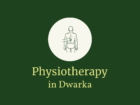If you’ve ever woken up with a stiff, painful shoulder that just won’t move the way it should, you’re not alone. Many people in India (and across the globe) deal with periarthritis also known as frozen shoulder. It sneaks up on you, making everyday tasks like combing your hair or even wearing a kurta pretty tough. The good news? You don’t have to live with that nagging pain forever. With the right periarthritis shoulder exercises, plus proper treatment, you can slowly but surely bring back strength and flexibility.
But here’s the million-rupee question: should you rely only on rest, or is exercise the real game-changer? Let’s break it down.
What is a Periarthritis Shoulder?

Periarthritis shoulder, often called frozen shoulder, is basically inflammation around the shoulder joint. It’s not just the bones at play here the soft tissues like ligaments, tendons, and muscles are affected too. This makes the joint stiff, painful, and difficult to move.
Common causes include:
- Diabetes (a very common link in India)
- Past injuries or fractures
- Poor posture (think long desk hours or phone scrolling)
- Aging and hormonal changes
In simple words, periarthritis is like your shoulder going on “strike.” It doesn’t want to move, and every time you try, it protests with pain.
How Do You Treat Periarthritis?
When it comes to treatment, one size doesn’t fit all. The approach depends on the severity of your condition.
Here are some common treatments:
- Physiotherapy – Targeted stretches and physiotherapy in Dwarka exercises to regain mobility.
- Medications – Pain relievers or anti-inflammatory drugs prescribed by doctors.
- Heat or Cold Therapy – Helps reduce stiffness and relax muscles.
- Lifestyle Adjustments – Ergonomic sitting, avoiding slouching, and light daily movements.
- Rest (But Not Too Much) – While rest is important, complete immobility can worsen the stiffness.
So, while medicines may give short-term relief, exercises are the real backbone of recovery.
What is the New Treatment for Arthritis in the Shoulder?
Medical science is evolving, and so are the options for shoulder arthritis and periarthritis. Some of the newer approaches include:
- Hydrodilatation – A procedure where sterile fluid is injected to expand and stretch the joint capsule.
- PRP (Platelet-Rich Plasma) Therapy – Uses the body’s own platelets to promote healing.
- Advanced Physiotherapy Techniques – Like laser therapy, IFT (Interferential Therapy), or shockwave therapy for pain relief.
- Minimally Invasive Surgery – Reserved for severe cases where nothing else works.
But here’s the thing even with these new treatments, doctors in India emphasize combining them with consistent exercises to see lasting results.
Why Do Periarthritis Shoulder Exercises Work Best?
Think of your shoulder like a rusted door hinge. If you keep it still, the rust only gets worse. But if you gently oil and move it, the hinge loosens up. That’s exactly how exercises work on a frozen shoulder.
Benefits of doing exercises include:
- Reduced stiffness and better flexibility
- Improved blood flow to the shoulder joint
- Gradual pain reduction
- Prevention of long-term disability
So, while injections or tablets may mask pain temporarily, exercises deal with the root cause.
Simple and Effective Shoulder Exercises
Here are some physiotherapist-recommended movements that can be done at home. Remember, start slow, don’t force your shoulder, and stop if pain gets unbearable.
- Pendulum Exercise
- Lean forward, let your arm hang down, and gently move it in small circles.
- Towel Stretch
- Hold a towel behind your back with both hands and gently pull upward with your good arm.
- Cross-Body Stretch
- Use your good arm to pull the affected one across your chest.
- Finger Walk
- Face a wall and “walk” your fingers upward as high as you can.
- Outward Rotation
- Hold a stick with both hands, keep elbows close, and push the sore arm outward gently.
- Hold a stick with both hands, keep elbows close, and push the sore arm outward gently.
Pro tip: Consistency matters more than intensity. Even 10–15 minutes a day can bring results over time.
FAQs
- Can periarthritis heal completely?
Yes, but it often takes months. With the right physiotherapy and exercises, most people recover fully. - Is massage good for frozen shoulder?
Gentle massage can improve blood flow and relieve stiffness, but it should be done by a trained physiotherapist. - How long does it take to recover?
On average, 6 months to 1 year. Early treatment speeds up recovery. - Should I avoid all movements?
No. Avoid overstraining, but gentle movements and stretches are necessary to stop stiffness from worsening.
Conclusion
Periarthritis can be a frustrating condition, especially when it stops you from doing simple things like cooking, driving, or playing with your kids. But here’s the silver lining you’re not stuck with it forever. With the right periarthritis shoulder exercises, patience, and professional guidance, you can get your mobility and comfort back.
So instead of waiting for the pain to magically vanish, why not take that first small step today? After all, your shoulder deserves better than being stuck in “freeze mode.”

